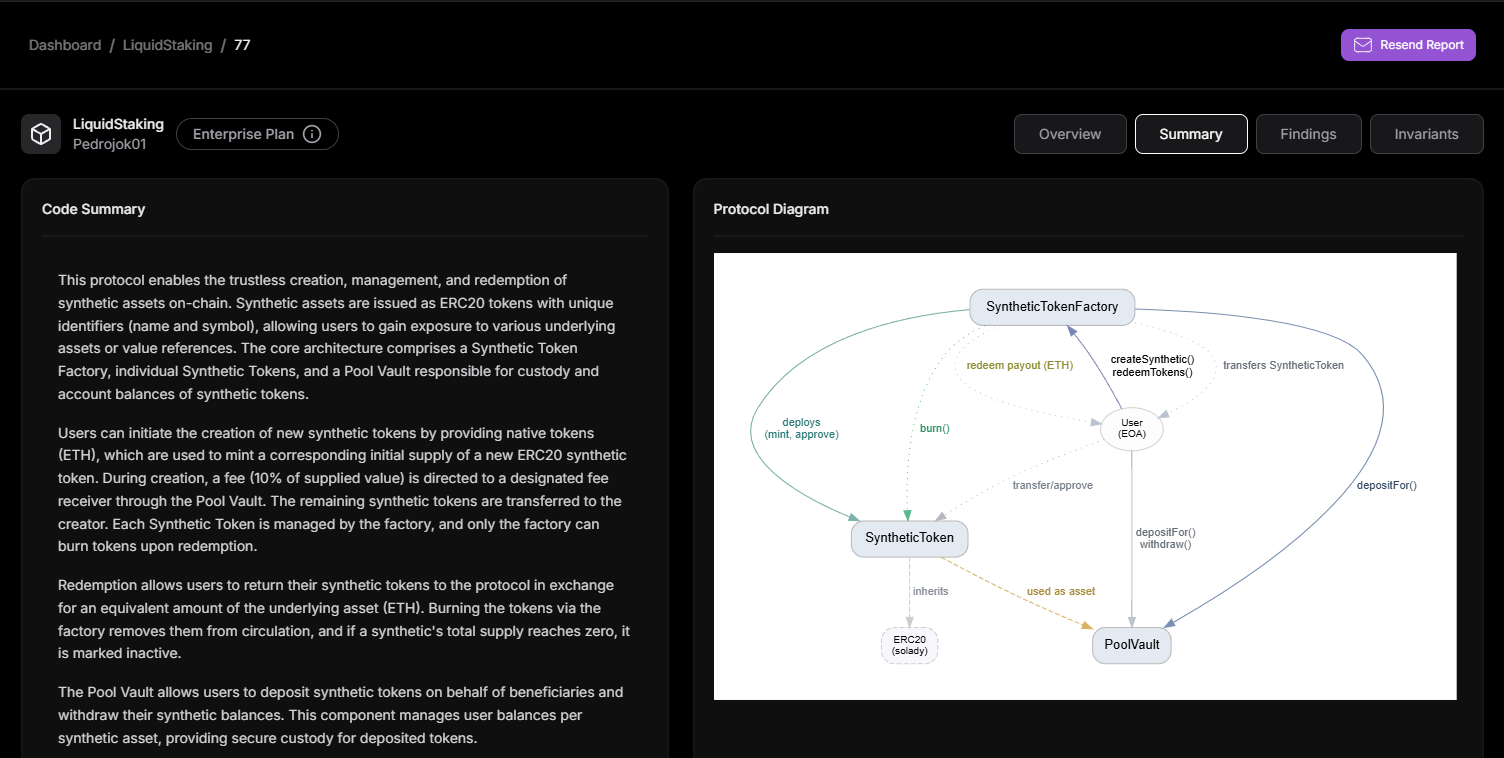Summary & Diagram
Welcome to the Summary tab of your AuditAgent scan results. This section provides a high-level textual and visual overview of the audited smart contract system, helping you quickly understand its core functionality and architecture.

Code Summary
The Code Summary section presents an AI-generated textual description of your protocol, derived directly from an analysis of your smart contracts. It is designed to capture:
- Overall Purpose: A high-level explanation of what the protocol aims to achieve.
- Core Architecture: Identification of the primary smart contracts and how they are structured.
- Key Mechanisms: An outline of the fundamental operations and interactions within the protocol.
- Main Entry Points & Actors: As part of its analysis, the AI identifies key public or external functions that modify the protocol's state (excluding simple read-only functions or those strictly limited to an owner). It also infers the types of actors (e.g., users, administrators, other contracts) that are likely to interact with these entry points.
This summary is generated to give auditors and developers a quick, yet comprehensive, understanding of the intended behavior and architecture of the smart contracts before diving into the detailed findings.
The summary can be very helpful for creating or updating your project documentation. But it can also help identify potential implementation errors when discrepancies arise between the intended logic and the actual code!
Protocol Diagram
The Protocol Diagram offers a visual representation of the interactions between the different components of your smart contract system and the identified external actors.
Key elements typically illustrated in the diagram include:
- Smart Contracts: The main contracts within your system, usually shown as distinct nodes.
- Actors: The different types of external entities (users, other contracts, etc.) that interact with the protocol.
- Interactions: Arrows and labels depicting the flow of calls, data, or tokens between contracts and actors. This includes function calls, deployment relationships, and inheritance patterns.
This diagram helps in visualizing the flow of operations and understanding the interconnectedness of the different parts of your protocol, making it easier to identify potential areas of complexity or risk.
By combining the textual Code Summary with the visual Protocol Diagram, this tab offers a comprehensive yet accessible overview of your project's design and intended functionality, as interpreted from the source code.